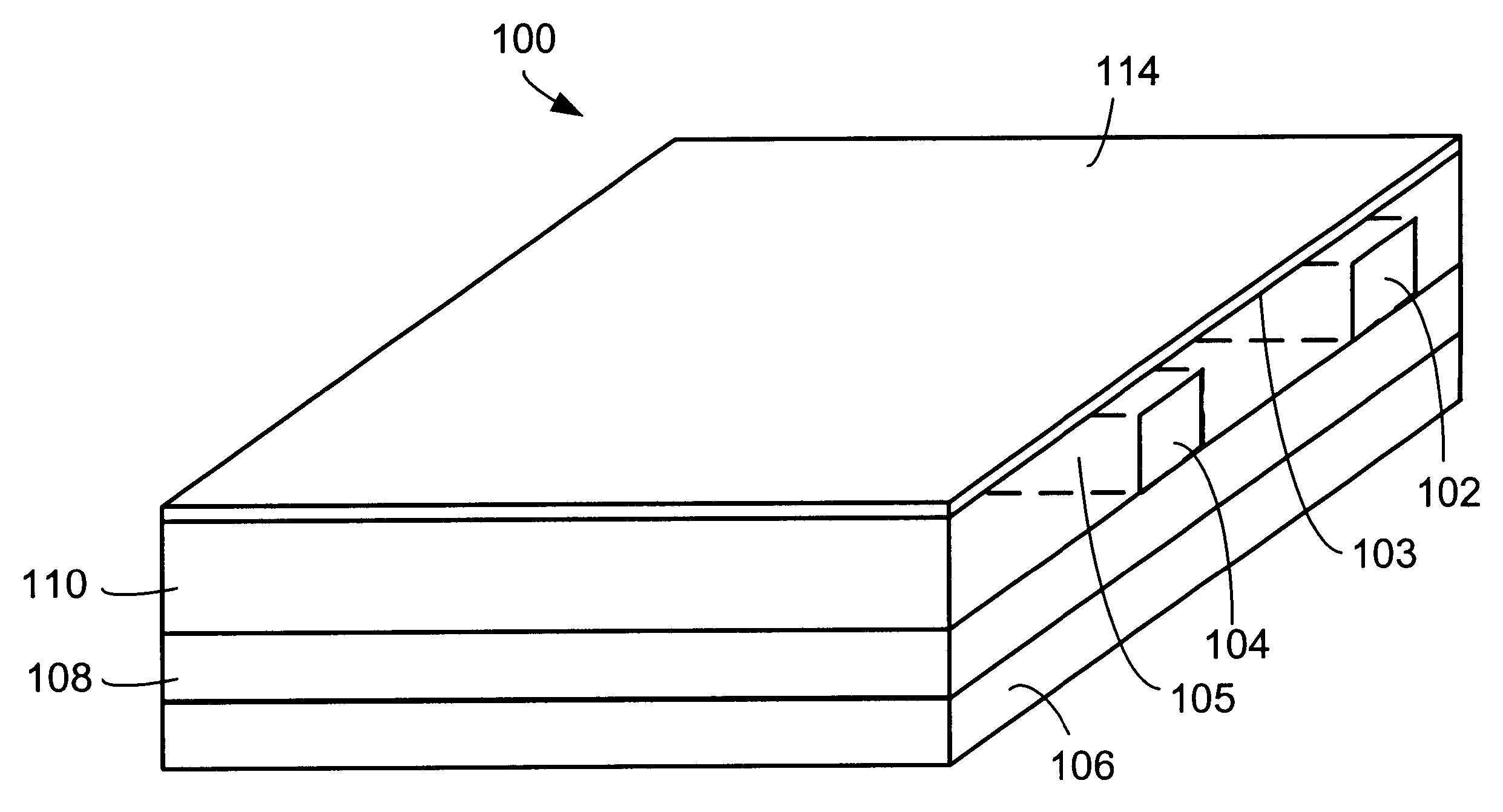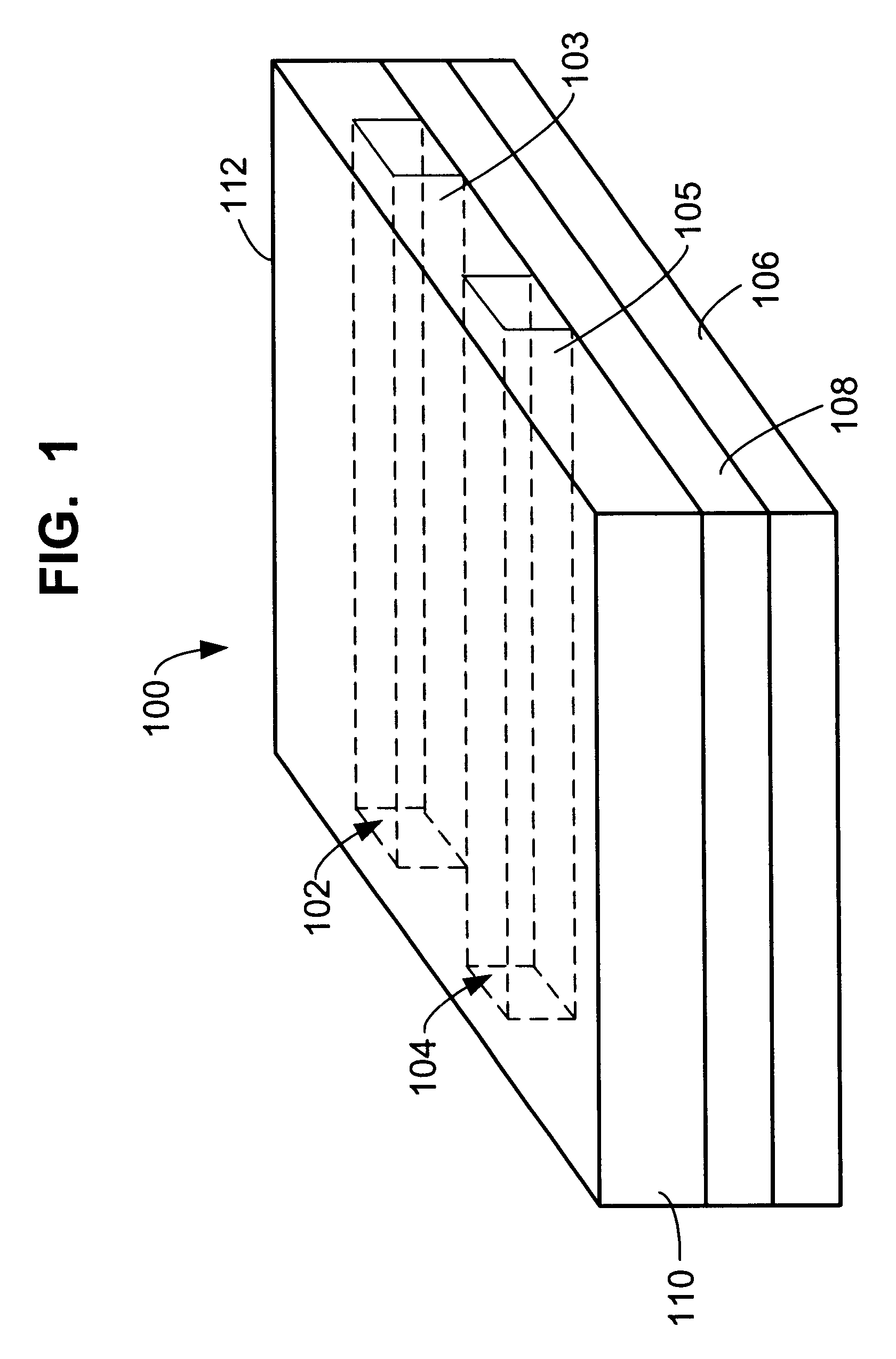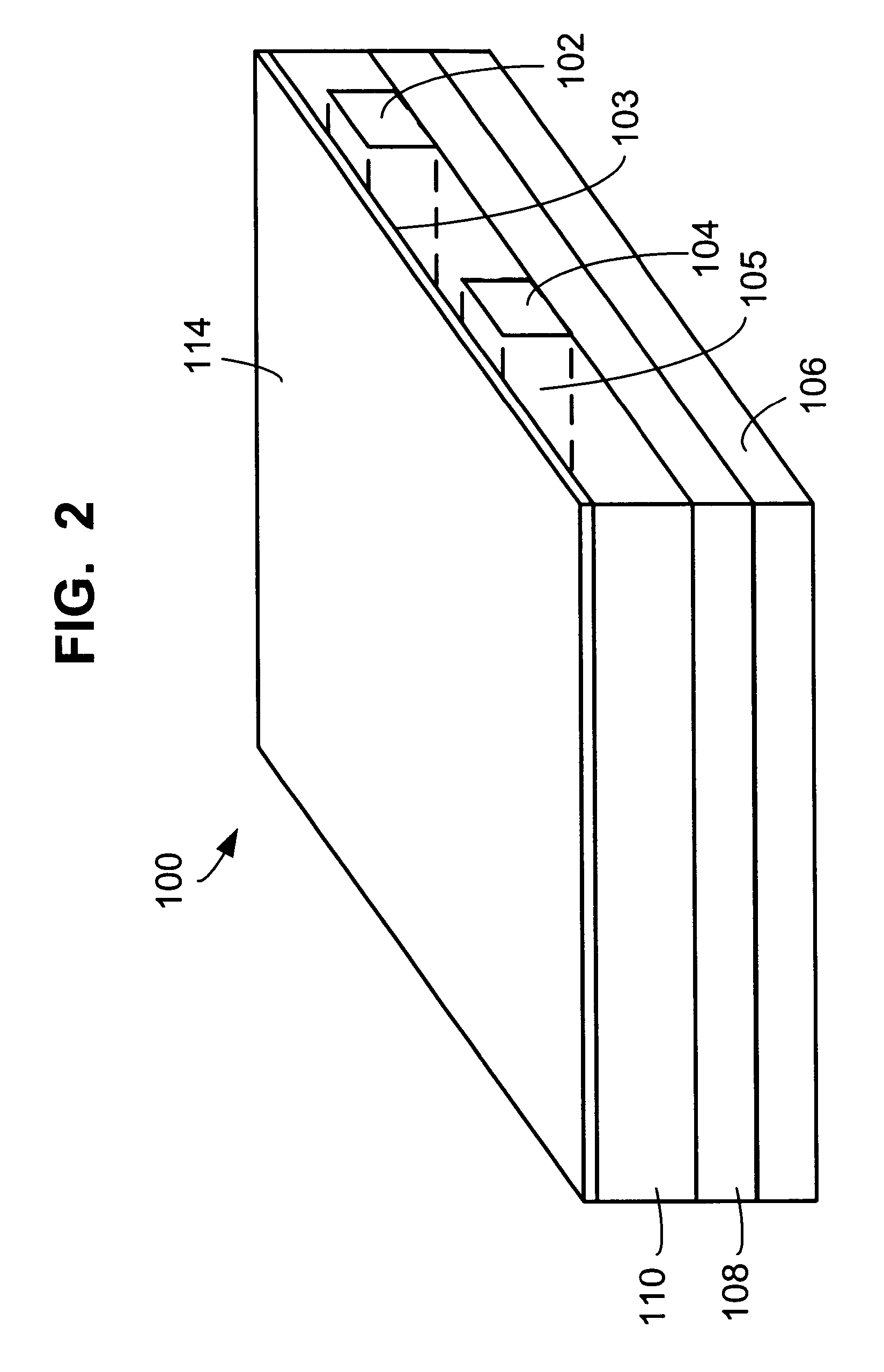Method of precision fabrication by light exposure and structure of tunable waveguide bragg grating
a technology of tunable waveguide bragg grating and light exposure, which is applied in the direction of glass making apparatus, manufacturing tools, instruments, etc., can solve the problems of fiber bragg gratings restricting optical network design and implementation, slow reconfiguration, and notoriously difficult to achieve optical networks
- Summary
- Abstract
- Description
- Claims
- Application Information
AI Technical Summary
Problems solved by technology
Method used
Image
Examples
Embodiment Construction
Provided are numerous methods, and structures formed from the same, that address the above-described problems. While preferred examples and numerous alternatives thereto are provided below, it will be appreciated by persons of ordinary skill in the art that these are exemplary in nature. The teachings herein may be used to form a great many optical waveguide devices having Bragg gratings, including optical devices formed by planar lightwave circuit processes and otherwise. Furthermore, while the approaches are described in the context of forming Bragg gratings during an UV exposure process, the teachings herein may be applied to other UV exposure processes in which UV exposure spot size has previously limited the density or close spacing of optical components.
An optical waveguide structure 100 is shown in FIG. 1. The optical structure 100 includes a first waveguide 102 and a second waveguide 104, which are preferably sized for single mode operation, though multi-mode operation is su...
PUM
| Property | Measurement | Unit |
|---|---|---|
| Temperature | aaaaa | aaaaa |
| Electrical conductivity | aaaaa | aaaaa |
| Electrical resistance | aaaaa | aaaaa |
Abstract
Description
Claims
Application Information
 Login to View More
Login to View More - R&D
- Intellectual Property
- Life Sciences
- Materials
- Tech Scout
- Unparalleled Data Quality
- Higher Quality Content
- 60% Fewer Hallucinations
Browse by: Latest US Patents, China's latest patents, Technical Efficacy Thesaurus, Application Domain, Technology Topic, Popular Technical Reports.
© 2025 PatSnap. All rights reserved.Legal|Privacy policy|Modern Slavery Act Transparency Statement|Sitemap|About US| Contact US: help@patsnap.com



